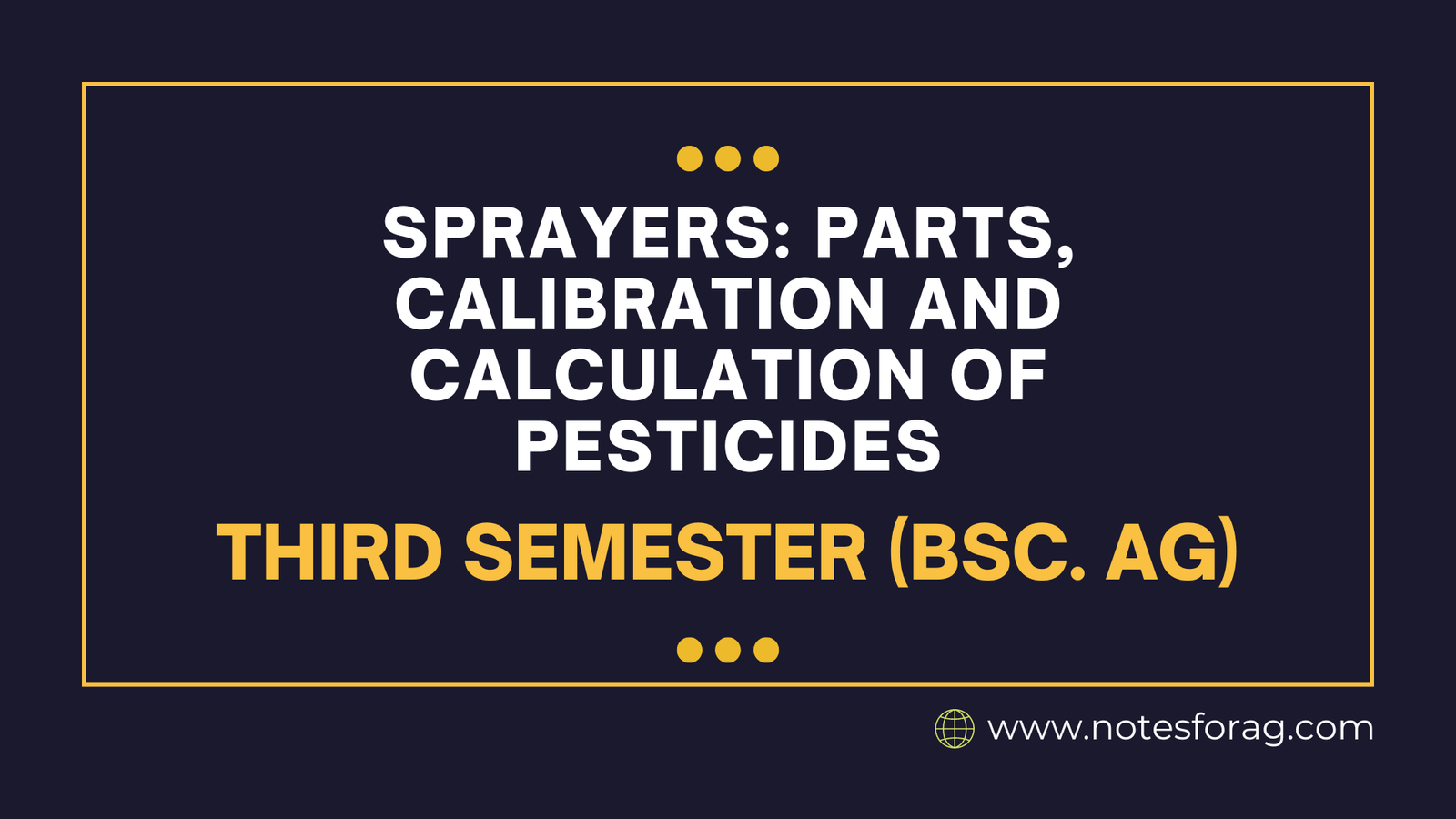Sprayers are essential equipment for effective pesticide application in agriculture, pest control, and gardening. The tank, pump, nozzles, pressure regulator, and control valve are all essential components. Proper calibration ensures that the sprayer applies the appropriate amount of pesticide, eliminating over- or under-application. This includes metering the sprayer’s output, inspecting the nozzles, and adjusting pressure or speed. Accurate pesticide computation is critical for applying the proper dosage, which is determined by the area to be treated and the prescribed pesticide rate on the label.
Table of Contents
What is Sprayers?
Sprayers are essential for the efficient application of pesticides, and understanding their components is vital for routine maintenance and peak performance. The pump, nozzles, hoses, and tanks are the essential components of a sprayer, with each serving a specific function within the system. Sprayers are essential tools for efficiently and successfully applying pesticides in agriculture, pest management, and home gardening. Understanding their components, calibration, and the proper computation of pesticide application rates are critical for safe and precise operation.
The pump is the sprayer’s heart, responsible for pressurizing the liquid pesticide to ensure proper dispersion. Sprayers employ several types of pumps, such as diaphragm pumps, centrifugal pumps, and piston pumps. Each type offers advantages, based on the intended application and the viscosity of the fluids being handled. A properly operating pump enables regular application rates, which is critical for reducing waste and avoiding crop damage.
Parts of a Sprayer
Sprayers vary in kind (handheld, backpack, boom sprayers, etc.), but they usually have the following fundamental components:
- Tank/Reservoir: Holds the pesticide solution. The size varies based on the sprayer type.
- Pump: Pressurizes the liquid to produce a spray. It can be manually operated (hand pump) or motorized.
- Nozzles: Apply the insecticide in predetermined patterns (fan, cone, stream). The size of the droplet and the application rate are affected by the nozzle used.
- Pressure regulator: Controls liquid pressure for consistent application.
- Filter: Prevents debris from clogging the nozzles and provides a uniform spray pattern.
- Hose & Lance/Wand: Direct the spray from the tank to the intended region.
- Control Valve / Trigger: Opens and closes the pesticide flow.
Calibration of Sprayers
Calibration ensures that the sprayer applies the appropriate amount of insecticide to the desired area. Proper calibration prevents over-application (which wastes chemicals and harms the environment) and under-application (which provides inadequate pest control). Here’s how to calibrate sprayers:
Steps for Calibration:
1. Measure the sprayer output.
- Fill the tank with water.
- Spray a predetermined area (e.g., 100 square feet) for a certain time.
- Calculate the flow rate by measuring the amount of water sprayed.
2. Check the nozzles:
- Make that all of the nozzles are working properly and that the spray is uniform.
- Replace any worn or clogged nozzles that could influence the spray pattern.
3. Calculate the Sprayer Application Rate:
- Use the following calculation to compute the application rate in gallons per acre (GPA):
GPA= GPM×5940/Speed (mph)×Width of Spray (ft) - This equation takes into account the sprayer’s output, the vehicle’s speed, and the width of the spray.
4. Adjust the pressure or speed:
- Adjust the sprayer’s pressure or operating speed to get the required application rate.
Calculation of Pesticides
Proper pesticide calculations are required to administer the appropriate dose for successful pest control while reducing environmental impact. The amount of pesticide required varies depending on the area to be treated and the pesticide concentration.
Steps for Calculating Pesticide Dosage:
1. Determine the area:
- Calculate the area to be treated (such as in acres or square feet).
2. Read the pesticide label:
- The label specifies the recommended application rate, which is frequently expressed as the amount of pesticide per acre or per 1,000 square feet.
3. Use this formula:
- Use this general calculation to calculate the amount of insecticide required:
Pesticide Amount (oz)= Application Rate (oz/acre)×Area (acres)/Concentration - Example: If the pesticide label recommends 16 oz per acre and you need to treat two acres, the appropriate amount is:
16 oz/acre×2 acres=32 oz
4. Mixing the pesticide:
- After determining the amount of insecticide, mix it with the amount of water specified on the package.
5. Check the equipment:
- Ensure that the sprayer is properly calibrated to deliver the solution at the desired rate, preventing under- or over-application.
Proper sprayer use and chemical application provide successful pest control while also protecting the environment. When working with insecticides, always follow the label instructions and safety requirements.
Frequently Asked Questions
What are the main parts of a sprayer?
A sprayer’s main components are the tank (which holds the pesticide), the pump (which pressurizes the liquid), the nozzles (which distribute the spray), the pressure regulator (which controls spray pressure), the filter (which prevents clogging), the hose and wand (which directs the spray), and the control valve or trigger.
Why is sprayer calibration important?
Calibration ensures that the sprayer applies the appropriate amount of insecticide to a specified region. It aids in avoiding over-application (which wastes chemicals and damages crops) and under-application (which results in inefficient pest control).
Related Articles

